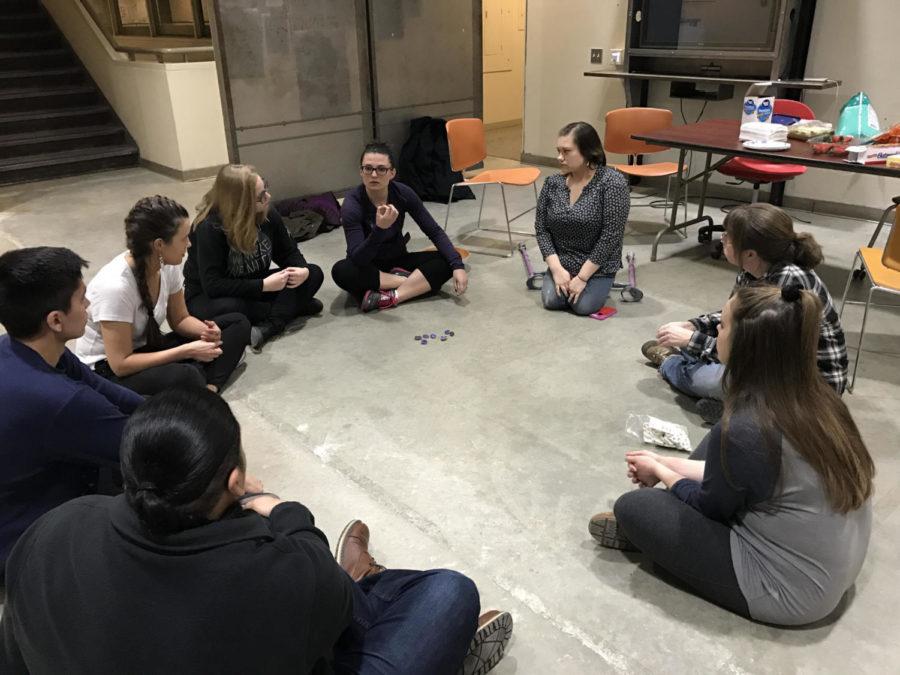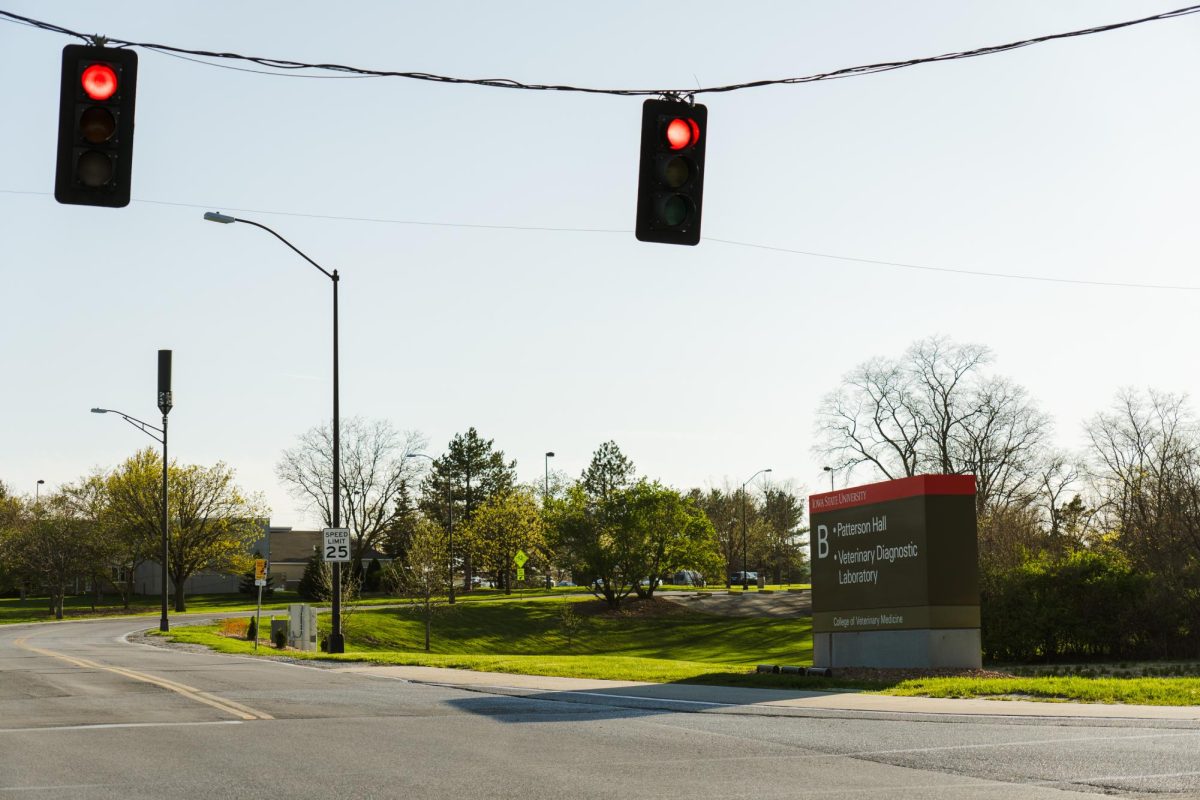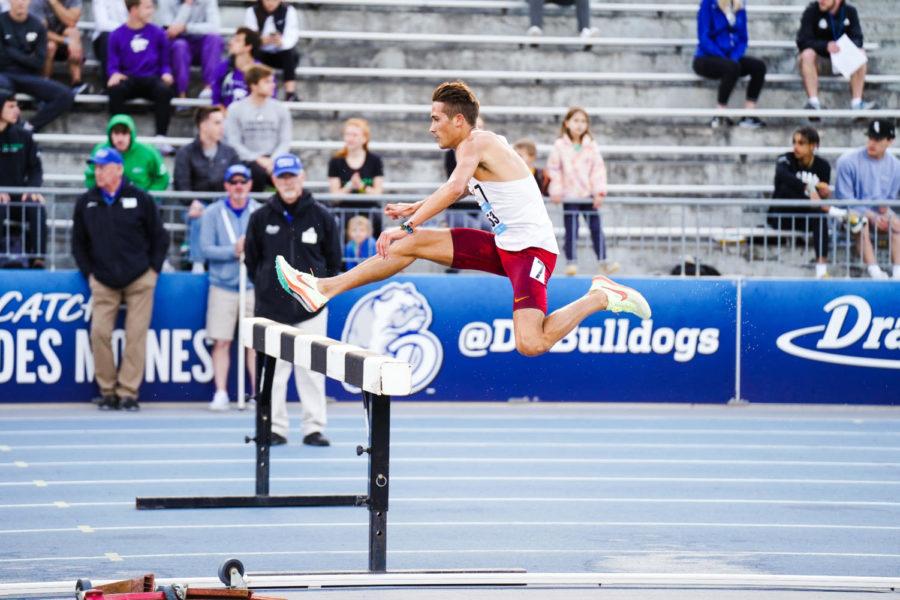Native American Student Association seeks to grow organization
Haley Strass teaches United Native American Student Association members how to count in Myaamia, an Algonquin language formerly spoken in the Midwest, on Feb. 15, 2017 in the Design Building.
February 15, 2017
A group of eight students sat in a circle tossing and swirling purple stones in a wooden bowl, simultaneously learning a new game and a new language Wednesday night.
The United Native American Student Association (UNASA) came together to learn and play games that originated from Native American tribes. UNASA is a group of fewer than 10, with the hopes of welcoming more students, both native and non-native.
The game that was played was referred to as the “bowl game,” which was brought by a member of the Myaamia tribe, Haley Strass. Strass also taught the group how to count to 10 in Myaamia.
Storhm Henry, junior in apparel, merchandising and design, said the game was similar to one his tribe, the Meskwaki, played. He also made the connection between Algonquin language and Myaamia, which are language cousins.
Many Native American games are similar to one another, but have some aspect that makes them different from one tribe to another. Native members of UNASA shared games that they had grown up playing and described the differences to the group.
Out of the members present, there were six native students. They shared casual conversation about their tribes and customs and how their experiences differed.
The group is small compared to the size of the organization five years ago.
“We’re just starting new, starting fresh,” president Ivory Hanson said.
Hanson and other cabinet members revitalized the group last semester after it lost support for many years. Hanson was inspired to start UNASA again after coming to Iowa State and missing the community feeling back home.
“It was a major culture shock. I wanted to help create a community for native students,” Hanson said.
UNASA is not an activist club, but rather a cultural one that focuses on teaching aspects of Native American culture to all of those who want to attend. Hanson’s goal is to spread knowledge of native culture in activities.
It has not been an easy road for UNASA. Not only has the group struggled to get larger numbers, but discrimination has also surfaced against its members.
The first event the organization hosted took place in November. It was a table set up with flyers passed out on how to combat the stereotypes of Native Americans.
Treasurer Rachel Tucker can specifically remember two words that came from a stranger.
“He called us ‘filthy savages,’” Tucker said.
Since then, UNASA has not hosted any events but has focused on recruiting more members. Hanson has reached out to multicultural affairs officers, professors in American Indian Studies and has hung flyers around campus to promote the group.
One thing other members think is holding back potential newcomers is the fact that they believe the club is only for native students. Although the group is predominantly native, it is welcome to students and faculty of all backgrounds.
















